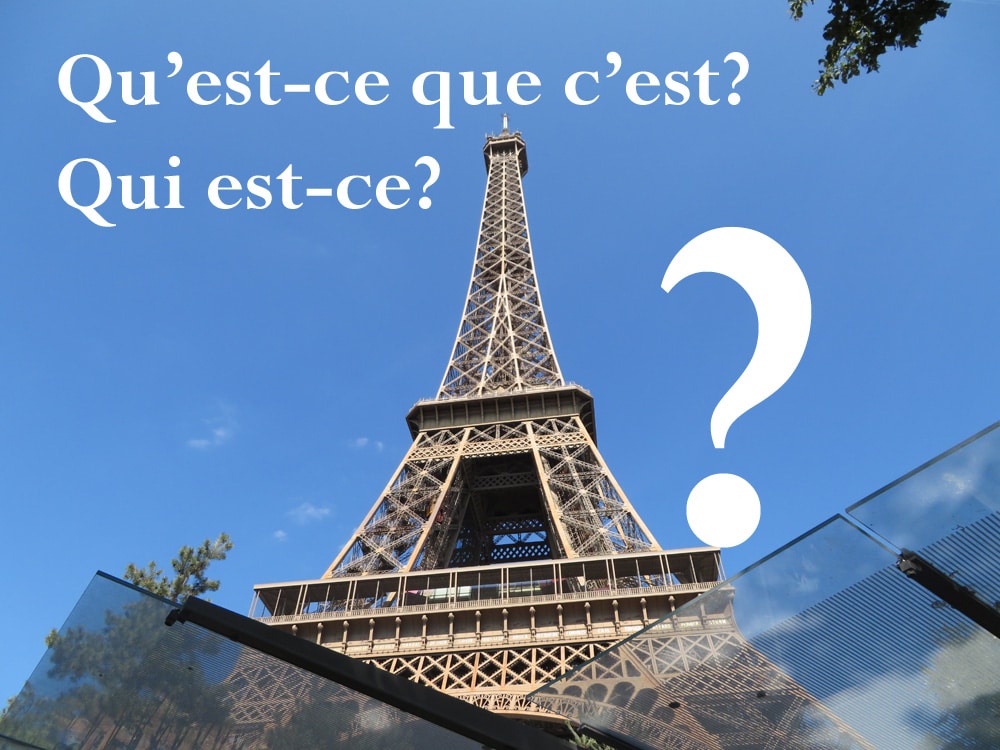Today, we’re going to discuss about some basic structure in the French language, that is used on a daily basis.
I’m referring to : « c’est » « il est » « elle est » « il y a »
When do you use « c’est », when do you use « il est »?
As a rule, « c’est » identifies someone or something:
C’est Shauntelle qui arrive. Here comes Shauntelle.

Ce sont nos amis. They are our friends.
C’est le vase qu’il a acheté. It’s the vase that he bought.
Ce sont les fleurs qu’elle a cueillies. These are the flowers she picked.
C’est Shauntelle qui arrive. Elle est élégante. She is elegant.
C’est Pierre. Il est grand. He is tall.
Ce sont nos amis. Ils sont espagnols. They are Spanish.
C’est le vase qu’il a acheté. Il est en porcelaine. It is in porcelain.
Ce sont les fleurs qu’elle a cueillies. Elles sont mauves. They are purple.
« Il est », « Elle est » describe people or things:
C’est Shauntelle qui arrive. Elle est élégante. She is elegant.
Ce sont nos amis. Ils sont espagnols. They are Spanish.
C’est le vase qu’il a acheté. Il est en porcelaine. It is in porcelain.
Ce sont les fleurs qu’il a achetées. Elles sont bleues. They are blue.
Summary:
c’est + noun
the verb number will agree with the noun. (c’est = it is; ce sont = they are)
il est + adjective
the verb will agree with the adjective. (il, elle, on est = he, she, it is; ils, elles sont = they are)

To identify people, you’ll ask: Qui est-ce? C’est Pierre. Ce sont mes amis.
To identify things you’ll ask: Qu’est-ce que c’est? C’est la tour Eiffel. Ce sont des fleurs.
To express a negation:
ne + verbe + pas: Ce n’est pas Pierre. Ce ne sont pas nos amis.
Généralité : c’est + adjectif
Attention! When we express a general statement, we’ll use: c’est + adjective. It describes something in general. In this case the adjective is neutral. The gender and number of the noun is ignored:
Le chocolat, c’est bon. Chocolate is good.
La rentrée, c’est déprimant. Going back to school is depressing.
Les enfants, c’est bruyant. Kids are noisy/kids, it’s noisy.
But we use Il est + adjectif to describe something specific.
We also use « il est » to tell time:
Il est 13 heures. It’s 1 p.m.
Il est 8 heures du matin. It’s 8 a.m.
L’expression « il y a »
The expression « il y a » is used with a noun and indicates the existence of something in a location. It is invariable whether the noun is masculine, feminine, singular or plural.
Il y a une voiture dans le garage. There is a car in the garage.
Il y a un homme au volant. There is a man at the wheel.
Il y a des enfants sur le siège arrière. There are kids on the back seat.
Qu’est-ce qu’il y a dans le garage ? What is there in the garage?
Il n’y a pas de bicyclette dans le garage. There is no bike in the garage.
We use it as well to express the weather with a noun:
Il y a du soleil, il y a du vent, il y a de la neige, il y a de la pluie, il y a de la grêle.
It’s sunny, it’s windy, there is snow, there is rain, there is hail.
Y-a-t-il du soleil? Is it sunny? – We add the “t” to ease pronunciation, no other reason.
It indicates a moment in the past:
Je l’ai rencontré il y a trois jours. I met him 3 days ago.
Il y a plus d’un siècle, nous n’avions pas d’avions. More than a century ago, we didn’t have airplanes.
If you’re a high beginner or low intermediate, click here for one hour of French Conversation.
